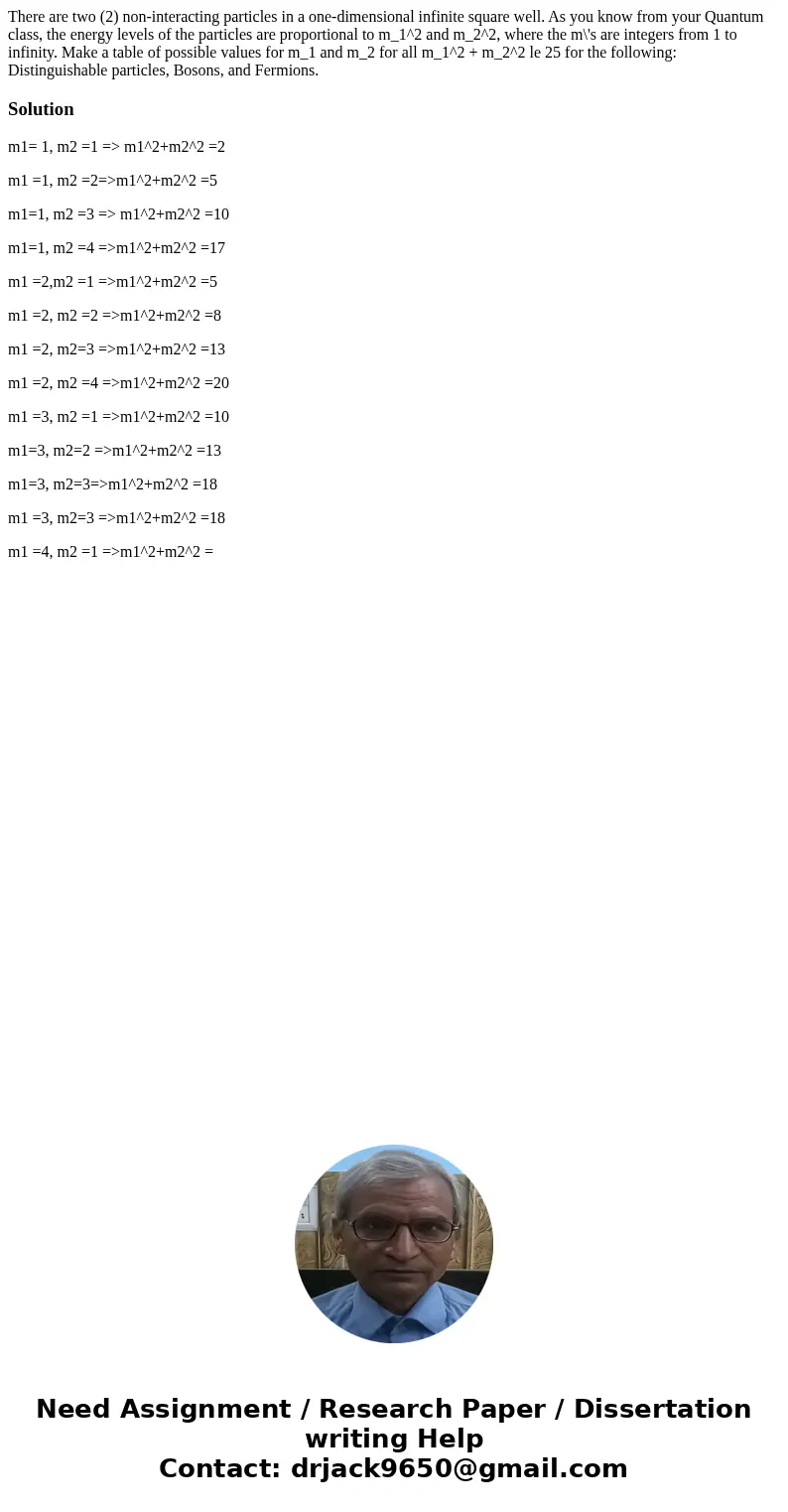There are two 2 noninteracting particles in a onedimensional
There are two (2) non-interacting particles in a one-dimensional infinite square well. As you know from your Quantum class, the energy levels of the particles are proportional to m_1^2 and m_2^2, where the m\'s are integers from 1 to infinity. Make a table of possible values for m_1 and m_2 for all m_1^2 + m_2^2 le 25 for the following: Distinguishable particles, Bosons, and Fermions.
Solution
m1= 1, m2 =1 => m1^2+m2^2 =2
m1 =1, m2 =2=>m1^2+m2^2 =5
m1=1, m2 =3 => m1^2+m2^2 =10
m1=1, m2 =4 =>m1^2+m2^2 =17
m1 =2,m2 =1 =>m1^2+m2^2 =5
m1 =2, m2 =2 =>m1^2+m2^2 =8
m1 =2, m2=3 =>m1^2+m2^2 =13
m1 =2, m2 =4 =>m1^2+m2^2 =20
m1 =3, m2 =1 =>m1^2+m2^2 =10
m1=3, m2=2 =>m1^2+m2^2 =13
m1=3, m2=3=>m1^2+m2^2 =18
m1 =3, m2=3 =>m1^2+m2^2 =18
m1 =4, m2 =1 =>m1^2+m2^2 =

 Homework Sourse
Homework Sourse